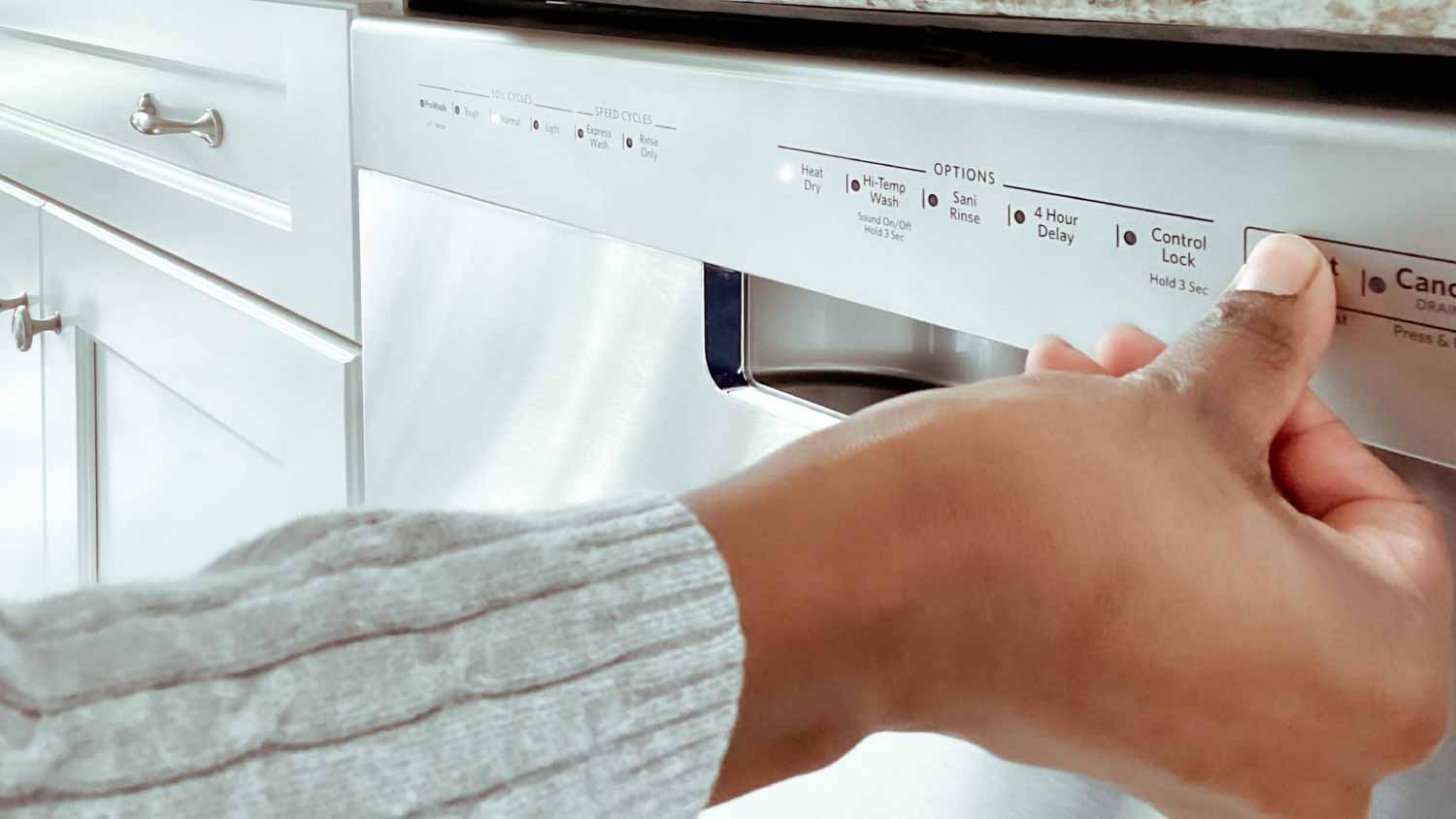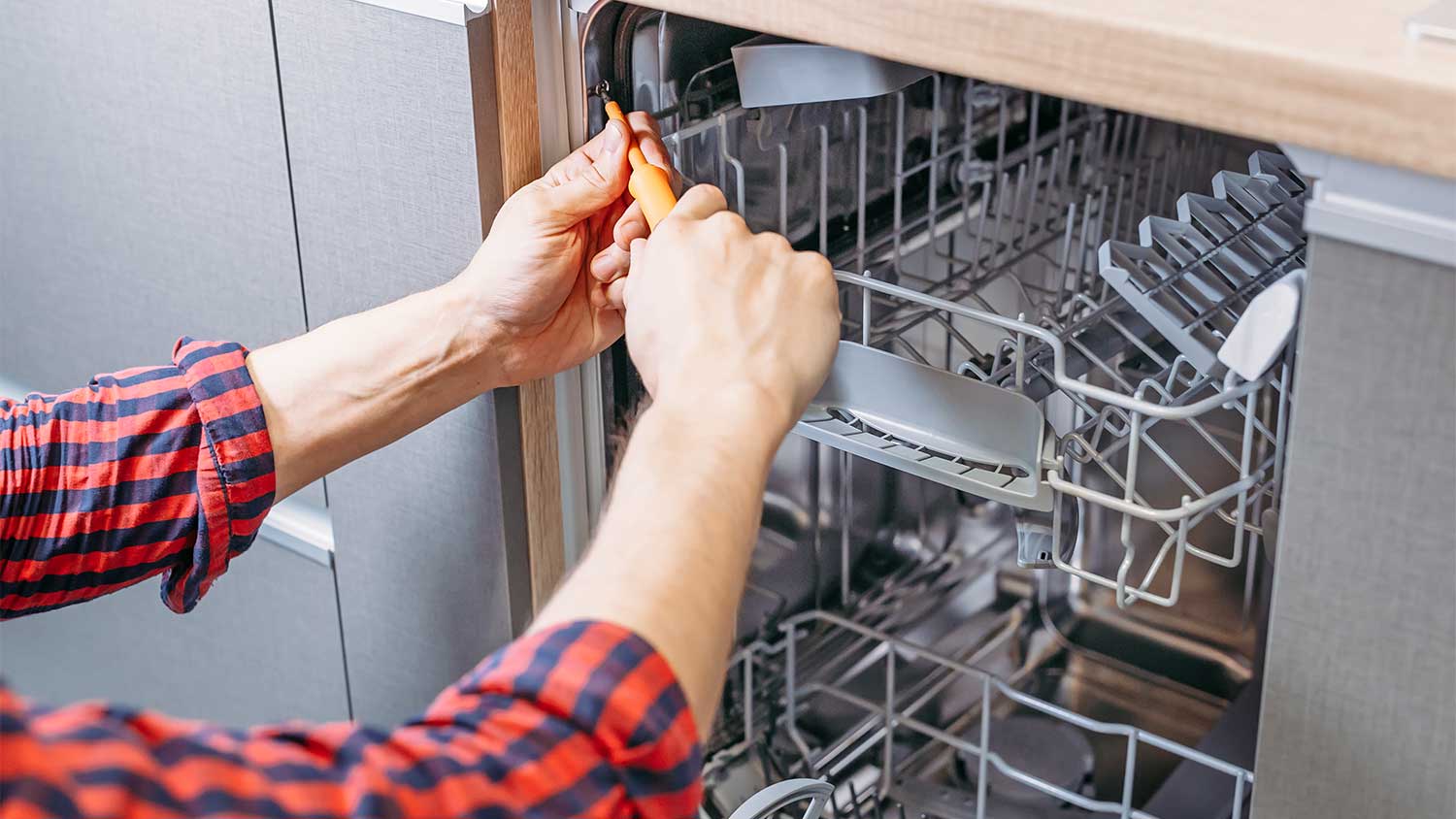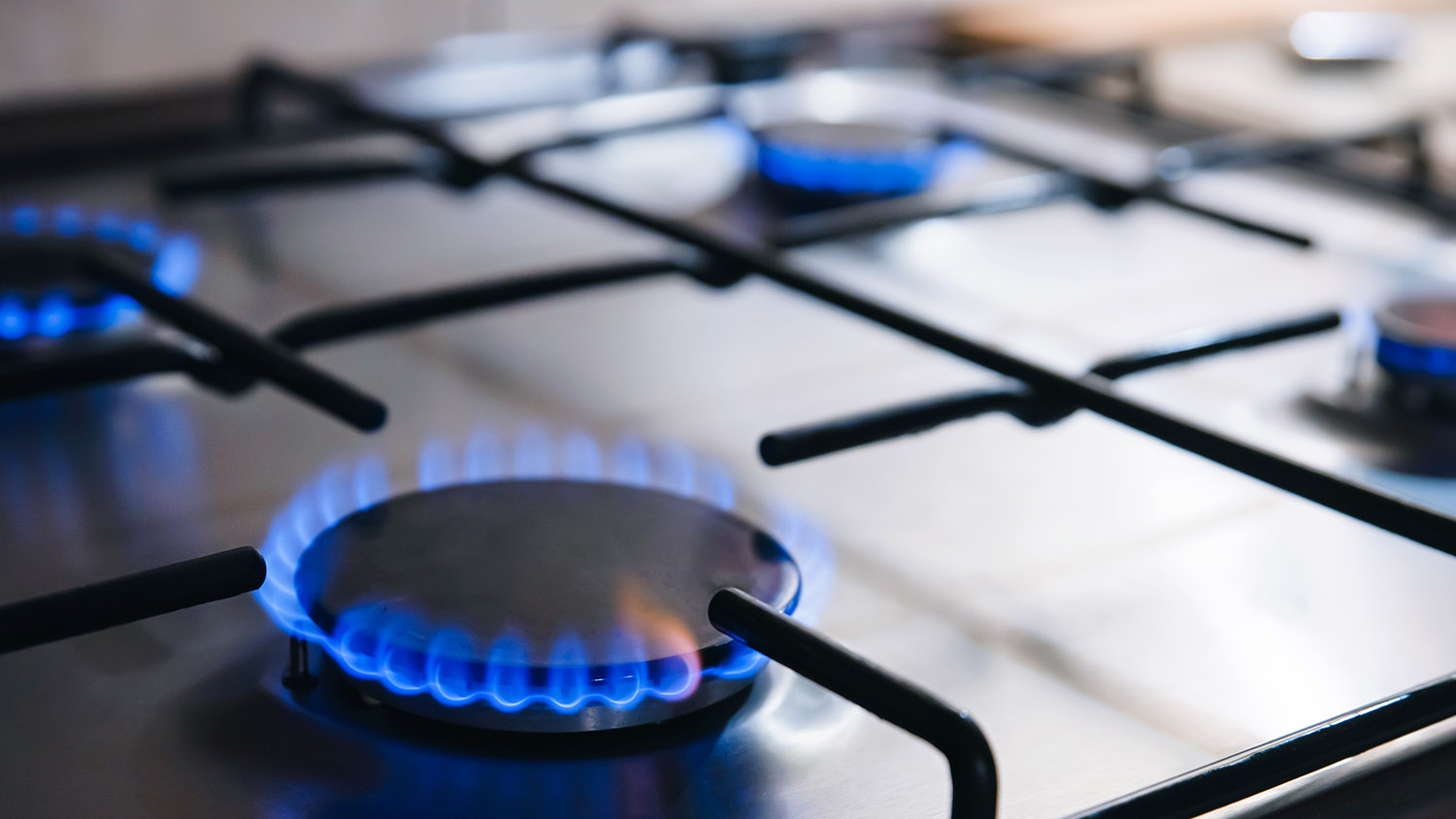
Looking to keep warm this winter without the high utility bills? Use this pellet stove installation cost guide to see what a natural heating solution will cost.
The parts of a dishwasher work together in beautiful—and clean—harmony


Dishwasher parts work in tandem to clean your dishes.
Understanding what each part does can help you troubleshoot problems.
Most parts of a dishwasher are easy to maintain and clean.
When you can identify the dishwasher parts, you can try DIY repairs.
If your dishwasher is on the fritz, you're may be tempted to open it up and start poking around for a fix. But to figure out the problem, it's helpful to know what you're looking at—and how everything works. From the door to the control panel, let's break down all the parts of a dishwasher so you can keep your kitchen counter clear of dirty dishes.

Several key parts of a dishwasher make it function efficiently. Most of these parts are relatively easy to access, starting with the exterior features and moving inward.

The dishwasher door swings open to allow access to the interior for loading and unloading dishes. It swings closed when it’s time to run a cycle. The door often contains the control panel on the exterior and the soap dispenser on the interior.
The door latch is the part at the top of the door that keeps the door closed, preventing leaks. The latch contains a sensor. If the latch is broken or doesn’t tightly close, the machine may act as if it doesn’t have power and refuse to run.
The gaskets attach to the edges of the entire perimeter of the door, creating a seal when you close the door and run a cycle. If the gaskets are dirty or showing wear, they won’t create a complete seal, and you could end up with leaks and a mess.
The dishwasher door hinges are at the bottom. They connect the door to the main dishwasher unit and allow the door to swing freely. Loose hinges could lead to leaks.
The vent in the dishwasher's door allows steam to escape from the interior of the unit during cycles. It’s often at the bottom of the door panel.
The control panel includes buttons that allow you to select the dishwasher cycles and start the machine. These buttons are on the top edge of the door or on the exterior door panel.
The soap dispenser is a tiny compartment on the inside of the door. It often has at least two separate sections for detergent and rinse aid liquid. After you close the dispenser compartment, a sensor opens each section at the right time in the cycle to add detergent or rinse aid to the water in the tub.
The rotating spray arms are in the bottom, middle, and top of the dishwasher. Water moves through the holes in the spray arms, striking the dishes with a little force to remove food particles.
The racks are the sections in the dishwasher's interior that hold the dishes and glasses you are washing. They slide out to make it easier to load and remove dishes. The racks have tines that extend upward to separate dishes and support a vertical orientation in the dishes for proper washing.
The silverware basket is a removable basket where you can load your silverware in a vertical alignment for more thorough cleaning.
The tub is the shallow base of the dishwasher that fills with water before the wash and rinse cycles. It contains the drain, float, filter, pump, and heating element.
The filter is a cylinder in the base of the dishwasher tub that covers the drain. The filter catches food particles, pet hair, and other solids to keep them out of the drain hose. You can remove the filter to clean it.
The overfill float sits in the dishwasher's base, usually near the right front corner. As the tub fills with water, the float rises. Once it reaches the desired height, it signals the water inlet valve to stop allowing water into the tub.
The heating element is a coil in the base of the dishwasher tub that heats up at different parts of the operational cycle. It heats the water for washing and rinsing during those cycles. During the drying cycle, it heats the air inside the dishwasher to evaporate any remaining water.
The thermostat continually measures the water temperature inside the dishwasher’s tub. It sends a signal to the heating element to turn on or off, depending on the water temperature it measures.
The water inlet valve and water hose supply water to the dishwasher. The inlet valve opens when a cycle needs water and closes once the water in the dishwasher tub reaches the desired height. The water hose connects to your home’s water supply.
The circulation pump and motor force the water in the bottom of the dishwasher tub through the spray arms. The water pressure the pump generates causes the arms to spin (almost like a rotating lawn sprinkler) and delivers the gentle force needed to clean and rinse the dishes.
The drain sits in the bottom of the tub, protected by the filter. The drain connects to the drain hose, which allows the used water from the dishwasher cycle to drain away. The drain hose connects to your home’s sewer system.
The parts of a dishwasher all work together to run a full cycle of washing, rinsing, and drying.
After you choose your dishwasher cycle on the control panel and close the door, the inlet valve opens and allows water to fill the tub to the desired level, as measured by the float. The soap dispenser opens to release the detergent.
The heating element then heats the standing water to around 140 degrees Fahrenheit. When the thermostat measures the proper temperature in the water, the heating element turns off.
The circulation pump and motor force the heated water and detergent from the tub into the spray arms, which rotate and spray the dishes. After the washing cycle, the drain opens and allows the water to run out of the machine. The filter catches any food particles washed away from the dishes.
After draining the dirty water, the tub fills with clean water, which the heating element warms again. The pump then forces the water through the spray arms for the rinse cycle.
After this water drains away, the heating element operates to warm the interior of the unit, evaporating any remaining water. The vent allows steam to escape during both the rinse and drying cycles.

Maintaining a few important parts of a dishwasher doesn’t require a lot of time or effort.
Filter: Unscrew the filter every few weeks and lift it out of place. Clean any food or other particles stuck to the sides of the filter by rinsing it in the sink and gently wiping it down.
Door Edges: Wipe down the edges of the doors and the gaskets every several weeks to remove any grime or food particles that could affect the seal.
Spray Arms: You can use a toothpick to clean out the holes on the spray arms every few months, removing any stuck food particles. If you have hard water, minerals could build up and block the spray arm holes. You may want to run a water softener to help your dishwasher last longer and to improve the spray arms’ performance.
You can wipe down the interior with a disinfecting cloth every few months to prevent a buildup of germs or mildew. Additionally, you can place a cleaning tablet in the soap dispenser and run a normal cycle without dishes every few months to give the entire unit a full cleaning.
Here are some common dishwasher problems and the parts that could be malfunctioning. You can try these DIY troubleshooting techniques.
Cleanliness: If the dishwasher is not cleaning, you may have problems with loading too many dishes. The spray arms may have hard water buildup that’s blocking the spray holes. It’s also possible you are using the wrong cleaning setting on the control panel.
No Power: If the dishwasher won’t turn on, make sure it has power by determining if the lights on the control panel are working. If it doesn’t have power, check for any tripped circuit breakers. If the dishwasher door latch is not closing tightly or is broken, this could cause the dishwasher to behave as if the unit is not receiving power.
No Water: If the dishwasher is not getting water, make sure the door latch is closing properly. Check the float, which needs to be able to rise freely as the dishwasher tub fills with water to measure the proper water level. Check your home’s water supply, too.
Not Draining: If the dishwasher is not draining, check and clean the filter inside the machine. If the dishwasher’s drain water goes through your garbage disposal, run the disposal to clear any potential clogs. Look at the drain hoses and connectors for any signs of wear or pinching.
Not Drying: If the dishwasher is not drying the dishes, make sure you activate the drying cycle on the control panel. If the heating element is not operating properly, the drying cycle won’t work. Overcrowding the dishwasher with too many dishes could prevent the dishes from drying completely.
Odd Odors: If the dishwasher smells strange, try wiping down the interior with a disinfecting wipe. Run a cycle using a cleaning tablet with no dishes in the racks. Check the filter for old food particles and clean it.
If DIY troubleshooting techniques don’t work, you could have a more significant problem that requires a local dishwasher installation professional or repair technician.
For example, if the dishwasher won’t run even though it seems to be getting power, you could have a broken control panel that requires disassembling the machine. A pro can diagnose and fix these more challenging repair issues for you.
If you understand the parts of a dishwasher, but you can’t fix the problem with a DIY process, you can call someone who fixes dishwashers. You’ll get the best results if you hire a local dishwasher repair professional to tackle the issue.
You can expect to pay an average of $200 for a dishwasher repair cost from a pro, although some repairs can cost as much as $600. Labor costs for dishwasher repair run from $75 to $150 per hour.
If you can fix the problem yourself and if you already have the necessary tools, you’ll save money on labor costs. You’d only have to worry about the cost of the parts.
I have had another fabulous experience with this company. From my first call to scheduling quickly and the professional reps that arrived. The work was completed very quickly. Suggestions were made and I added a repair of another appliance at the last minute. The customer service,...
Both issues were rectified properly and effectively. Rochester Appliance is one of those rare businesses that gets it -- one that knows how to treat customers and ensure repeat business. They are punctual, courteous, professional, efficient, and they actually do what they say they'll do and...
Mr. Appliance of Rochester claims on their web page, that they “ Deliver fast service and exceptional quality results” which is the furthest from the truth from my own experience along with other people that posted negative Google reviews. Mr. Appliance sent and inexperienced technician to my...
Excellent job by Pro-Tech Appliance. Service was timely and professional. Explained options and completed work.
I called a day before when my side by side refrigerator stopped dispensing water; repairman came out next day and found the problem right away. He took extra time, did a real super job. I was real impressed with the expertise and professionalism. He got it all working and back to perfect...
It was expensive, but we’re happy with the work they did. The price above includes appliances.
They have been wonderful. We had trouble with the refrigerator and they were more than generous with their time and service with repairing it. They service the appliances they sell. It is a great company. I would go back and buy any appliance from them in a heartbeat. They are excellent. They...
Brian Doehler's Appliance Service fixed my icemaker on my expensive refrigerator after two different A & E “authorized” Appliance Service repair people could not figure out the problem and therefore, were unable to perform a simple fix of replacing a valve. The valve that Brian replaced was...
Wonderful. He gives wonderful advice rather you should keep or repair or appliance. Very prompt. He provides services within 24 hours.
From average costs to expert advice, get all the answers you need to get your job done.

Looking to keep warm this winter without the high utility bills? Use this pellet stove installation cost guide to see what a natural heating solution will cost.

Get expert insights on dishwasher repair cost, including average prices, key cost factors, and tips to save money on repairs.

Get a clear estimate for stove repair costs. Learn what impacts pricing, compare repair vs. replacement, and find tips to save on your next stove repair.

Calibrating your oven is usually a simple task you can do in less than an hour. Read here to learn how, no matter what type of oven you have.

Is repairing your oven worth it, or should you consider a replacement? There are several factors to consider when deciding to repair or replace.

Without proper ventilation, a washing machine can clog, leak, and cause a dangerous mess in your home. Learn how to vent a washing machine drain with this guide.